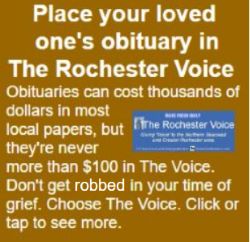With Americans losing an average of $564 per year in wasted time due to traffic congestion, the personal-finance website WalletHub today released its report on 2022's Best and Worst Cities to Drive in as well as expert commentary.
To determine the most driver-friendly places in the U.S., WalletHub compared the 100 largest cities across 30 key metrics. The data set ranges from average gas prices to annual hours in traffic congestion per auto commuter to auto-repair shops per capita.
| Best Cities for Driving | Worst Cities for Driving |
| 1. Raleigh, NC | 91. Los Angeles, CA |
| 2. Plano, TX | 92. Seattle, WA |
| 3. Corpus Christi, TX | 93. Baltimore, MD |
| 4. Greensboro, NC | 94. Washington, DC |
| 5. Winston-Salem, NC | 95. New York, NY |
| 6. Lincoln, NE | 96. Chicago, IL |
| 7. Jacksonville, FL | 97. San Francisco, CA |
| 8. Arlington, TX | 98. Oakland, CA |
| 9. Garland, TX | 99. Detroit, MI |
| 10. Orlando, FL | 100. Philadelphia, PA |
Best vs. Worst
- Honolulu has the lowest traffic fatality rate (per 100,000 residents), 2.30, which is 14.9 times lower than in Memphis, Tennessee, the city with the highest at 34.26.
- Gilbert, Arizona, has the fewest car thefts (per 1,000 residents), 0.58, which is 26.4 times fewer than in Oakland, California, the city with the most at 15.33.
- Laredo, Texas, has the lowest average gas price, $3.12 per gallon, which is 1.8 times lower than in San Francisco, the city with the highest at $5.46 per gallon.
- Corpus Christi, Texas, and Reno, Nevada, have the lowest average parking rate, $1.00 per two hours, which is 38.4 times lower than in Boston, the city with the highest at $38.40 per two hours.
To view the full report and your city's rank, please visit:
https://wallethub.com/edu/best-worst-cities-to-drive-in/13964
Please let me know if you have any questions or if you would like to schedule a phone, Skype or in-studio interview with one of our experts. Feel free to embed this YouTube video summarizing the study on your website. You can also use or edit these raw files as you see fit. Full data sets for specific cities are also available upon request.
Expert Commentary
What money saving tips do you have for drivers, as gas prices have been on an upward trend over the last few months?
"Try to limit travel at speeds higher than 65 or 70 mph. It has been shown that the optimal speed is about 55 mph, where going above or below that value will increase gas consumption. Hence, going slightly faster than 55 mph may be reasonable. Try to reduce sudden acceleration or deceleration events, which increase fuel consumption."
Dominique Lord - Professor & Faculty Fellow, Texas A&M University
"Select more gas-efficient routes. Faster travel time routes are not necessarily more energy efficient. Do not be aggressive on the gas pedal. We found that the top 10% of the aggressive events on a trip consume 25% of the total fuel of the trip."
Hesham A. Rakha, Ph.D., P.Eng., FIEEE - Professor; Director, Center for Sustainable Mobility, Virginia Tech Transportation Institute
When do you think there will be more self-driving cars than human-driven?
"We have a very long way to go before that will happen - probably 75-100 years. It will take over 25 years for 90% of the US fleet to have Advanced Driver Assistance Systems (ADAS) like adaptive cruise control, automatic emergency braking, and lane keeping (which is not automation)."
Daniel V. McGehee, PhD - Director, National Advanced Driving Simulator, Industrial and Systems Engineering; Emergency Medicine, Public Health, Public Policy, University of Iowa
"It will take time for a large number of self-driving cars to be seen on our roadways. We will see the majority of them first in our cities in on-demand services (think Uber and Lyft). It will take longer to see them in more suburban and rural areas. The exception to this will be large trucks. I expect to see partially automated platoons of trucks in the near future to allow for more efficient and safe freight movement."
Brian L. Smith - Professor; Chair of the Department of Civil and Environmental Engineering, University of Virginia
What can local authorities do to reduce traffic and improve safety?
"Investments in balanced, resilient transportation systems that focus on moving people and goods instead of vehicles are a good place to start. For instance, in urban areas, quality public transportation operated by professional drivers not only moves people more efficiently and safely than single-occupancy vehicles, but also frees up roadway space for shippers and commercial and emergency vehicles...Building streets in ways that encourage a range of users to interact safely is a must. Most roads today are oriented towards drivers. This orientation leaves other users on the periphery and, lacking infrastructure, puts vulnerable users such as pedestrians and folks on bikes at risk...The way we engineer our roads, especially those with multiple users, can go a long way toward signaling to drivers how to share space."
Kyle Shelton, PhD - Director of the Center for Transportation Studies, University of Minnesota
"Enact hands-free only laws where you can't touch your smart phone while you drive; have and enforce seatbelt laws in all seat positions; lower BAC levels to 0.05% or higher like Utah has; and enact strict teen driver license systems."
Daniel V. McGehee, PhD - Director, National Advanced Driving Simulator, Industrial and Systems Engineering; Emergency Medicine, Public Health, Public Policy, University of Iowa













